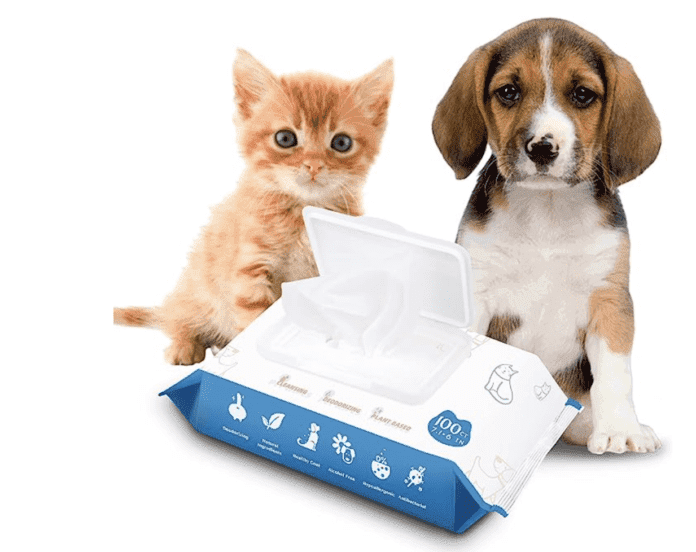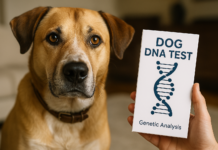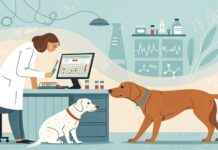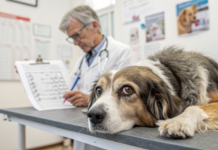Last Updated on July 5, 2023 by Dogs Vets
Dog Eye Wipes: The Ultimate Guide to Keeping Your Furry Friend’s Eyes Sparkling
Note: This article is designed to provide comprehensive information about dog eye wipes while incorporating relevant keywords for SEO optimization.
Our aim is to deliver valuable content that ranks well on search engines and offers useful insights to readers.
So, let’s dive into the world of dog eye care and discover the benefits of using dog eye wipes!
Introduction
Taking care of your furry friend’s eyes is essential for their overall health and well-being. Just like humans, dogs can experience various eye-related issues, such as tear stains, debris, or excessive discharge.

This is where dog wipe comes to the rescue! In this article, we will explore the importance of dog eye care, the benefits of using eye wipes, how to choose the right ones, and much more. So, let’s get started!
Understanding the Importance of Dog Eye Care
As responsible pet owners, we should prioritize our dogs’ eye health.
Dogs rely heavily on their vision to navigate the world around them, making it crucial to maintain clean and healthy eyes. Regular eye care can prevent infections, reduce discomfort, and improve your dog’s quality of life.
The Role of Dog Eye Wipes
Dog eye wipes are specially formulated to effectively clean and soothe the delicate areas around your dog’s eyes.
These wipes are gentle, non-irritating, and provide an easy and convenient way to keep your pup’s eyes fresh and free from dirt, debris, and tear stains.
Benefits of Using Dog Eye Wipes
- Gentle and Effective Cleaning: Dog eye wipes are designed to be gentle on the sensitive eye area while effectively removing dirt, discharge, and tear stains. They help maintain clear and healthy eyes.
- Preventing Eye Infections: Regular use of dog eye wipes can help prevent eye infections by eliminating bacteria and irritants that can accumulate around the eyes.
- Reducing Tear Stains: Tear stains can be unsightly and a breeding ground for bacteria. Dog eye wipes can help reduce tear stains, keeping your dog’s face clean and fresh.
- Soothing Irritation: If your dog experiences eye irritation or discomfort, using soothing dog eye wipes can provide relief and promote a sense of well-being.
Choosing the Right Dog Eye Wipes
When it comes to selecting the best dog eye wipes for your furry friend, it’s important to consider a few factors to ensure their safety and effectiveness.
- Gentle Formulation: Look for dog eye wipes specifically formulated for dogs, as they are designed to be gentle on their delicate eye area.
- Natural Ingredients: Opt for wipes made from natural ingredients that are free from harsh chemicals, fragrances, and artificial additives. This helps minimize the risk of irritation or allergic reactions.
- Hypoallergenic: If your dog has sensitive skin or allergies, choose hypoallergenic dog eye wipes to minimize the risk of adverse reactions.
- Tearless Formula: Ensure that the wipes have a tearless formula to avoid causing discomfort to your furry friend during the cleaning process.
How to Use Dog Eye Wipes Safely!
Using dog eye wipes correctly is essential to ensure your dog’s safety and effectiveness. Follow these simple steps:
- Preparation: Gather the necessary supplies, including the dog eye wipes, treats, and a clean towel.
- Comfort Your Dog: Create a calm and comfortable environment for your dog before starting the cleaning process. Offer treats and gentle reassurance to keep them at ease.
- Gently Wipe Around the Eyes: Take a dog eye wipe and gently wipe around the eyes, starting from the inner corner and moving outward. Use a fresh wipe for each eye to avoid spreading any potential infection.
- Remove Discharge and Stains: Pay extra attention to areas with discharge or tear stains. Gently wipe them away, being careful not to apply excessive pressure.
- Reward and Praise: Once you’ve finished cleaning your dog’s eyes, reward them with treats and praise to reinforce positive behavior.
Conclusion
Taking care of your dog’s eyes is crucial for their overall health and happiness. Dog eye wipes offer a convenient and effective solution to maintain clean, healthy eyes and reduce the risk of eye-related issues.
By choosing the right wipes, using them safely, and incorporating regular eye care into your dog’s routine, you can ensure that their eyes sparkle with vitality.
Remember to consult your veterinarian if you have any concerns or specific needs for your furry friend.
Frequently Asked Questions (FAQs)
Q1: Can I use regular baby wipes to clean my dog’s eyes?
A1: No, it’s best to use dog-specific eye wipes formulated to suit their unique needs. Baby wipes may contain ingredients that can irritate your dog’s eyes.
Q2: How often should I clean my dog’s eyes with wipes?
A2: The frequency of eye cleaning depends on your dog’s specific needs. However, a general recommendation is to clean your dog’s eyes with wipes 1-2 times a day or as advised by your veterinarian.
Q3: Are dog eye wipes safe for puppies?
A3: Yes, there are dog eye wipes specifically formulated for puppies. Always choose wipes suitable for their age and consult your vet if you have any concerns.
Q4: Can dog eye wipes help with tear stains?
A4: Yes, dog eye wipes are effective in reducing tear stains by gently removing the discolored fur around the eyes. However, it’s important to address the underlying cause of excessive tearing.
Q5: Are there any alternatives to dog eye wipes?
A5: Yes, if your dog is not comfortable with wipes, you can use a clean, damp cloth to gently wipe their eyes. Ensure the cloth is soft and free from any detergents or harsh substances.
Q6: Can dog eye wipes treat eye infections?
A6: Dog eye wipes can help prevent eye infections by keeping the eye area clean. However, if your dog already has an eye infection, it’s essential to consult a veterinarian for proper diagnosis and treatment.
Q7: Can I use dog eye wipes on other parts of my dog’s face?
A7: While dog eye wipes are specifically designed for the eye area, some wipes may be safe for other parts of the face. Always read the product instructions and consult your vet if you’re unsure.
Source References:
Fact Check
We hope you enjoyed reading this article. What are your thoughts on the topic?
“At [Dogsvets.com], our goal is to bring you the most accurate and up-to-date information on all things pet-related.
If you have any additional insights or would like to advertise with us, don’t hesitate to get in touch.
If you notice any errors or discrepancies in our content, please let us know so we can correct them.
We welcome your feedback and encourage you to share this article with others.”

















